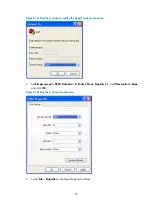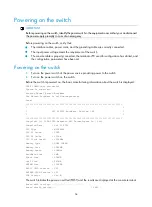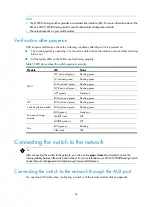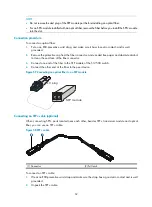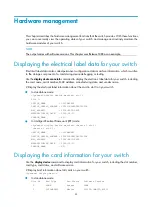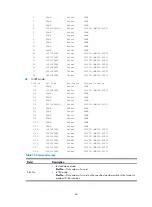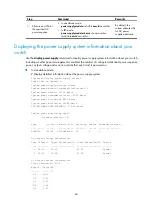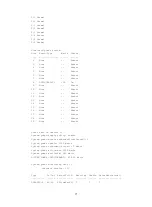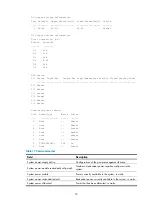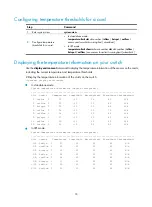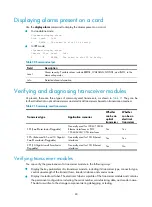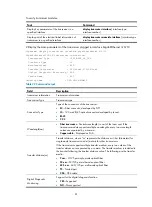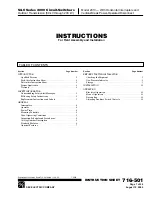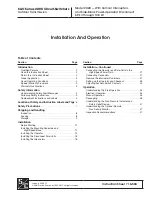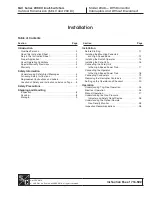
66
Step Command
Remarks
3.
Configure the number of
redundant power
supplies.
•
In standalone mode:
power-supply policy redundant
module-count
•
In IRF mode:
power-supply policy chassis
chassis-number
redundant
module-count
By default, the number of
redundant power supplies
depends on the reserved
power, which you can
display with the
display
power-supply
command.
Manually starting or stopping power supply to a card
When the switch is operating, you can start or stop power supply to a card to adjust the system available
power as needed.
Configuration guidelines
Before starting power supply to a card, confirm whether the power supply is overloaded after supplying
power to the new card. If the maximum power consumption of the system is greater than the available
power after supplying power to the new card, the system performs one of the following options:
•
With power supply management enabled, the system does not supply power to this card because
of the self protection mechanism.
•
With power supply management disabled, the system becomes unstable or the switch reboots
because of power supply overload.
For more information about power supply management, see "
Enabling power supply management
Configuration procedure
To start or stop power supply to a card:
Task Command
Remarks
Start or stop
power supply to
the specified card.
•
In standalone mode:
power-supply
{
on | off
}
slot
slot-number
•
In IRF mode:
power-supply
{
on | off
}
chassis
chassis-number
slot
slot-number
The specified card cannot be a
main board or a switching fabric
module.
Available in user view.
Allocating IDs for AC power supplies
IMPORTANT:
Each AC power supply can be allocated with only one ID, and multiple AC power supplies cannot have
the same ID.
This section is applicable to AC power supply system PSE9000 only. To view the model of a power
supply system, use the
display power-supply
command.
For PSE9000-A power supply system, the system can automatically set the power supply ID as the slot
number where the power supply is plugged, as shown in
After the system starts up, each AC power supply is allocated a unique local ID randomly. The randomly
allocated ID is not convenient for device management, daily maintenance, and fault location because
the randomly allocated ID is not related with the slot in which the AC power supply resides. You must
Summary of Contents for S12500 Series
Page 40: ...30 Figure 28 Installing an upper expansion cable management bracket 1 2 3 4 5 6 7...
Page 109: ...99 Figure 74 Replacing a card for the S12504 A Card to be removed B Card to be installed...
Page 149: ...139 Figure 85 Loopback operation on an optical transceiver...
Page 164: ...154 Figure 100 Example of a device label...

